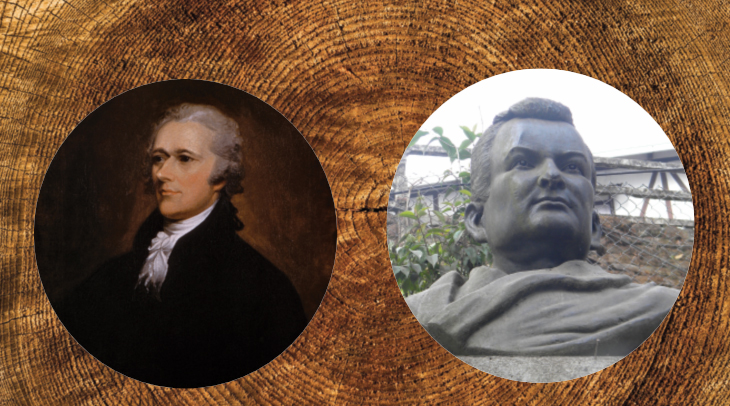By Sangeeta Godbole

Last summer I was reading an article on Himalayan expeditions which mentioned Rahul Sankrityayan as the father of Indian travelogs. I was surprised and somewhat ashamed that I knew nothing about him. A brief online search on him further jogged my curiosity as it revealed the transformative journey of his life. When I ordered all four parts of his autobiography in Hindi, Meri Jeevan-Yatra, I didn’t know I was giving myself a rare treat. Over the next few months, I thoroughly enjoyed his narrations written in simple, yet elegant Hindi. Sankrityayan was an explorer, a scholar, a writer, an activist, and a polyglot. His writings earned him the Mahapundit title.
While Sankrityayan was always a writer, much of his writing came about in the last decade or so of his life. Towards the end, his health kept him from traveling so he could focus on writing. “Why do you write like you are running out of time?†I remembered this line from Hamilton, the famous Broadway musical, while reading the last volume of Meri Jeevan-Yatra.
While I am aware of many prolific writers, Sankrityayan surpassed all of them. As I finished the voluminous four parts of Rahulji’s autobiography, I realized that being a prolific writer wasn’t the only similarity between him and Hamilton. You would not hear Alexander Hamilton and Sankrityayan mentioned in the same sentence, or a paragraph, or even a book. Yet I found compelling similarities and differences between them.
Humble beginnings Both Hamilton and Sankrityayan (then Kedarnath Pande) came from poor families. Both left their native places at a young age. While Hamilton went to New York, Kedarnath went to Calcutta first, then to many places seeking knowledge.
Fight against the British Empire Born over a hundred years and a world apart, both Hamilton and Sankrityayan were drawn to the freedom struggle of their respective countries. While Hamilton fought battles in the United States revolutionary war, Sankrityayan threw himself in Gandhi’s non-violent freedom movement, Swaraj Andolan. He also organized farmers who were oppressed by their landlords. He was jailed multiple times for his agitation, where he spent his time reading and writing.
Early writings Both young enthusiasts started their writing while still studying. While a student, Hamilton’s opinion pieces supporting the Continental Congress were published under a nom de plume, and he also addressed crowds on the subject. Sankrityayan wrote and gave speeches on various topics including atrocities of British Raj, land reforms and so forth.
Work on Constitution Both were lucky to witness the liberation of their country. Hamilton helped ratify the United States Constitution by writing 51 of the 85 installments of The Federalist Papers. Sankrityayan spearheaded efforts to translate all articles of Indian constitution in Hindi and other Indian languages.
Power and proximity to power Hamilton is known as one of the founding fathers of the United States of America. During Swaraj Andolan, Sankrityayan had worked shoulder to shoulder with the likes of Dr. Rajendra Prasad, the first president of independent India. Out of mutual respect, the president and Sankrityayan corresponded regularly. Sankrityayan used his proximity to power to help rural communities get access to education and healthcare.
Women While Hamilton was caught in a scandal because of his affair with a woman named Maria Reynolds, Sankrityayan was a polygamist. Young Kedarnath was married as a child as per the Hindu tradition. He never accepted that marriage but fathered a child with a woman in Russia while he was there on a teaching assignment. Later he married a much younger assistant of his, Kamala, and had two children.
As were the similarities, there were stark contrasts.
Capitalism vs Communism Hamilton was a father of American capitalism. President Washington appointed Hamilton as the first treasury secretary. Later he served as inspector general of the United States army.
Sankrityayan was a communist in the later part of his life. In his early life he was a Hindu Vaishnav monk and was named Ramudar. Later he became an Arya Samaji, then was attracted to Buddhist philosophy prior to becoming a communist. He took the name of Rahul Sankrityayan when he accepted Buddhism. Due to his ties to communist Russia, he was constantly watched by secret services and was kept out of power. His contribution to literature was recognized with the prestigious Sahitya Academy Award and Padma Bhushan Award.
Specialist vs Generalist Hamilton stayed in the United States and worked as a lawyer and a financial expert. Sankrityayan traveled and lived in many countries. He wrote Hindi translations of important works from ancient and modern languages. The most important work of his life was to discover lost Buddhist scriptures during his multiple, sometimes clandestine trips to Tibet. He wrote various books on his travels, which earned him the title of Father of Indian travelogue. He started writing during his twenties and his works, totaling well over 100, covered a variety of subjects, including sociology, history, philosophy, Buddhism, Tibetology, Lexicography, grammar, textual editing, folklore, science, and politics.
Obviously, there was more to the lives of Hamilton and Sankrityayan than what can be covered in one article. However, when one shines light on them together, what stands out is their love for their countries and their people. For as long as they lived, they strived to make their young countries better.
Sangeeta Godbole is a writer and a media creator from Durham, NC.
YouTube: Tilted Planet – YouTube



